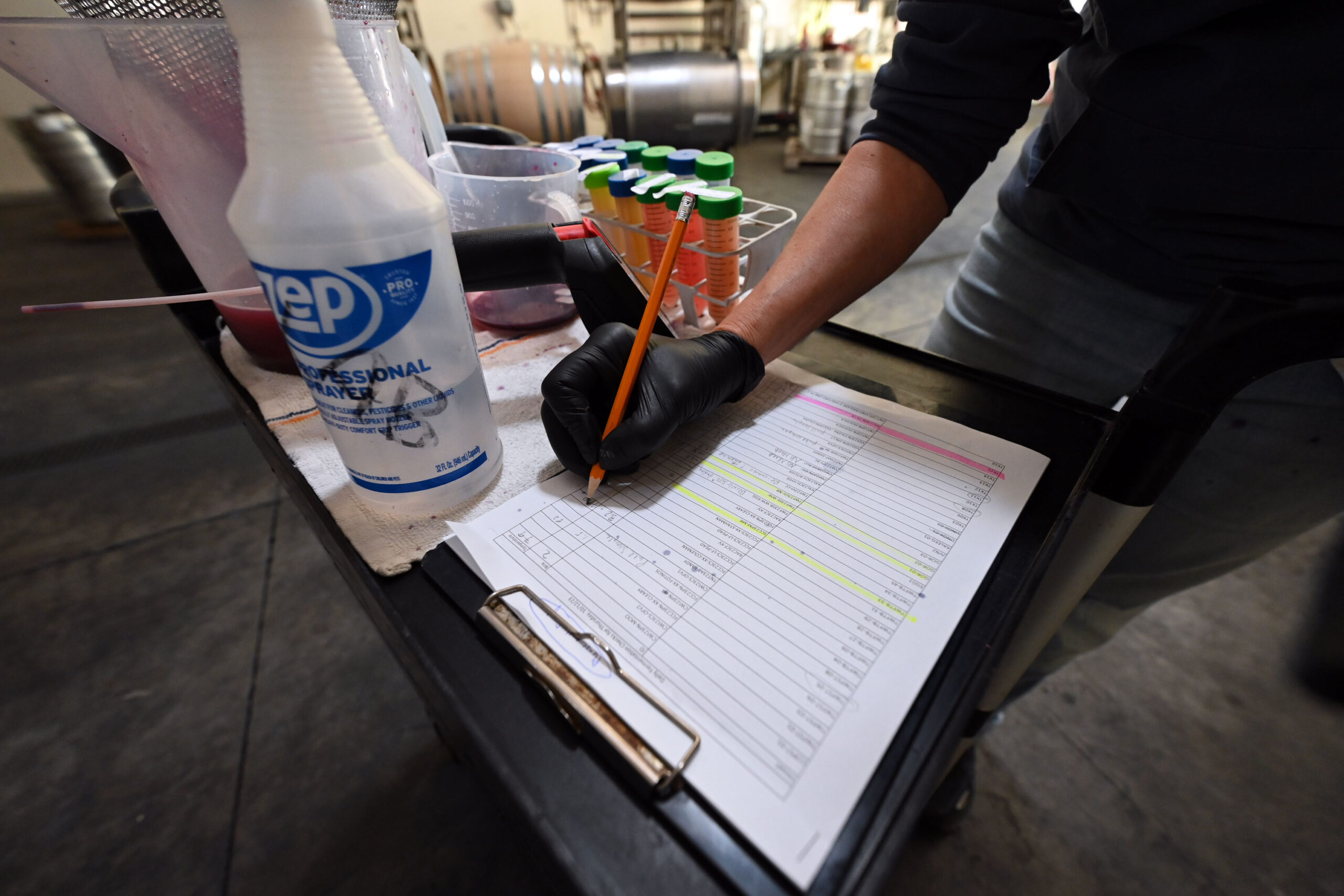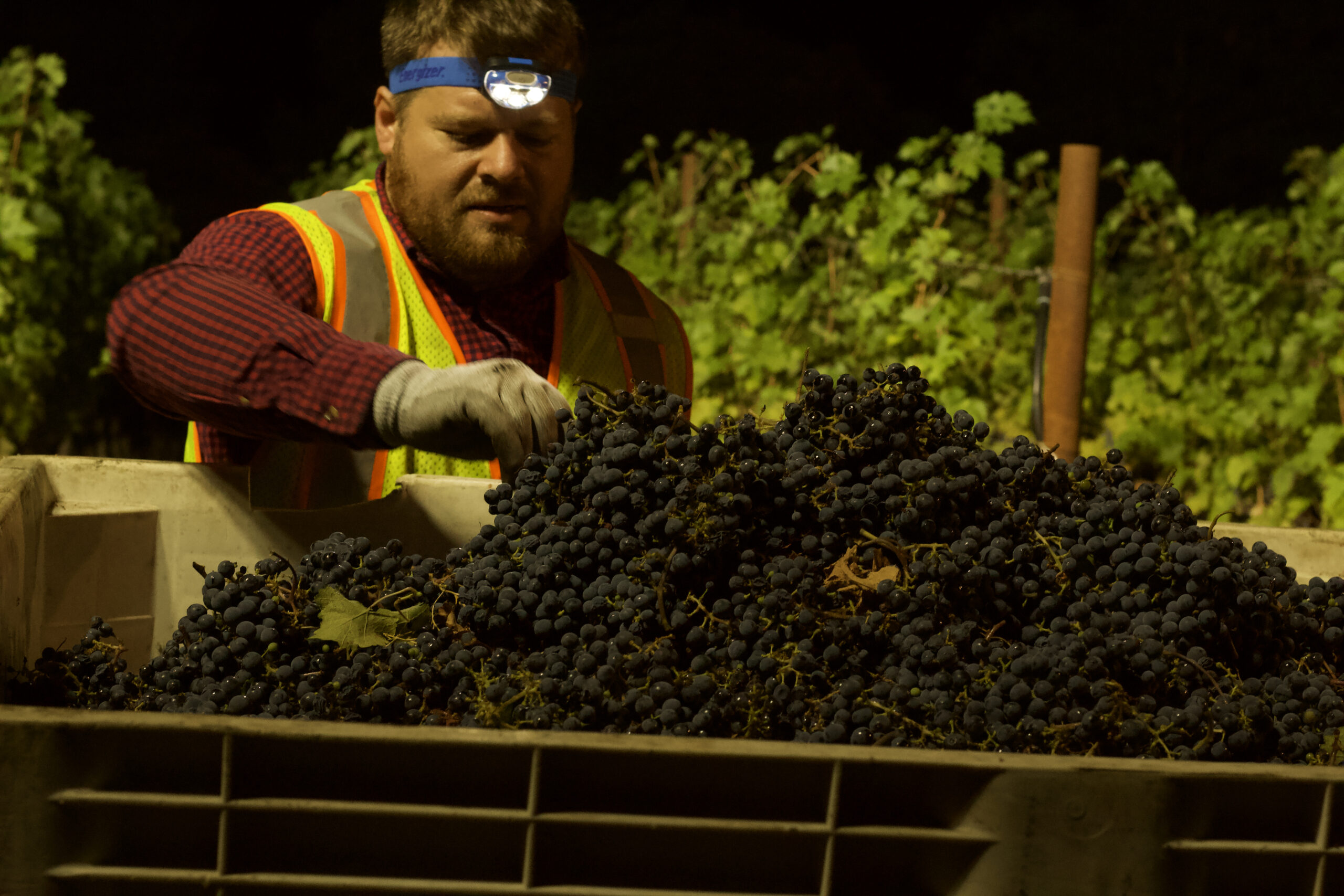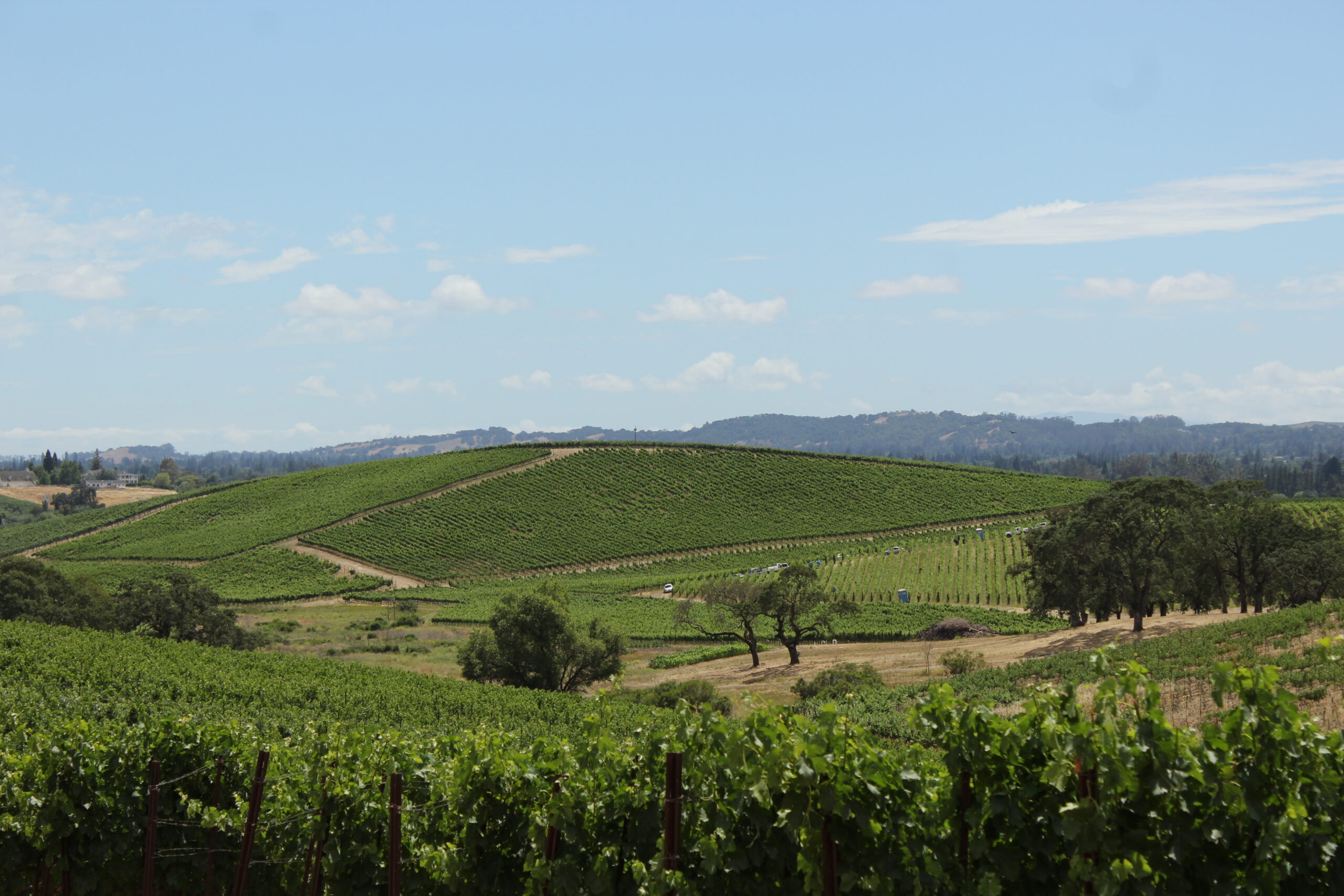After much needed rain while the vines lay dormant, sunny skies and moderate temperatures have marked the initial stages of the growing season. This summery foundation has moved vines into the flowering phase. Unlike many flowering plants, which rely on outside sources, like insects, for pollination, grapevines are hermaphroditic and self-pollinating. The calyptra, a protective cap, sits atop the flowers. When ready, the calyptra is shed, exposing the pistols to pollen so fertilization can occur.
During flowering, fingers are crossed in hopes of bringing good weather. Because wind or rain can disrupt pollination and cause uneven fruit development, known as shatter, some folks get worked up. This was one reason yields were so low in 2015. However, as we saw in 2015,  there can be an upside. When ‘shatter’ occurs, the unaffected fruit has more breathing room. This can reduce the probability mold will come into play during the critical period leading up to harvest. Further, the lighter yield often results in much more concentration and fruit intensity… hence the mind blowing quality with the 2015 vintage.
there can be an upside. When ‘shatter’ occurs, the unaffected fruit has more breathing room. This can reduce the probability mold will come into play during the critical period leading up to harvest. Further, the lighter yield often results in much more concentration and fruit intensity… hence the mind blowing quality with the 2015 vintage.


